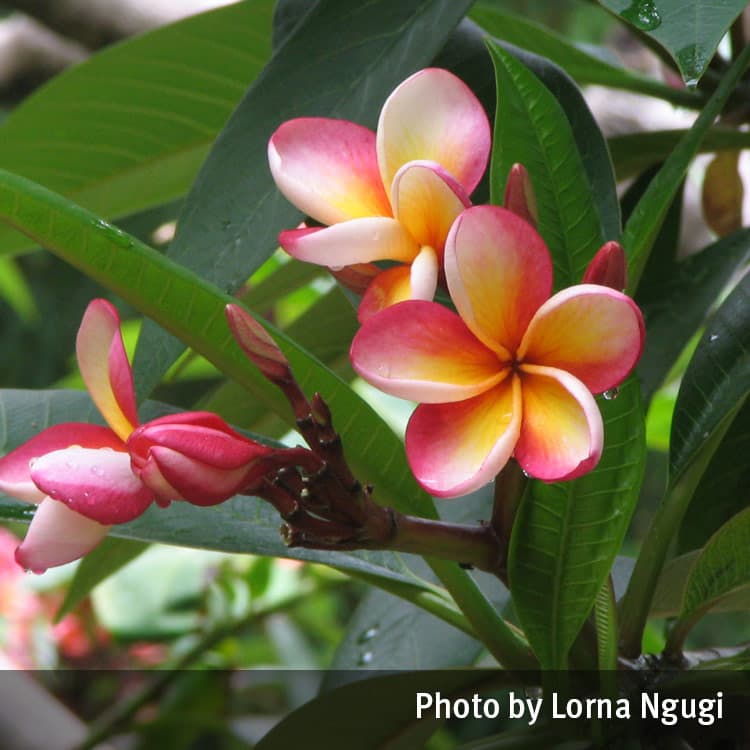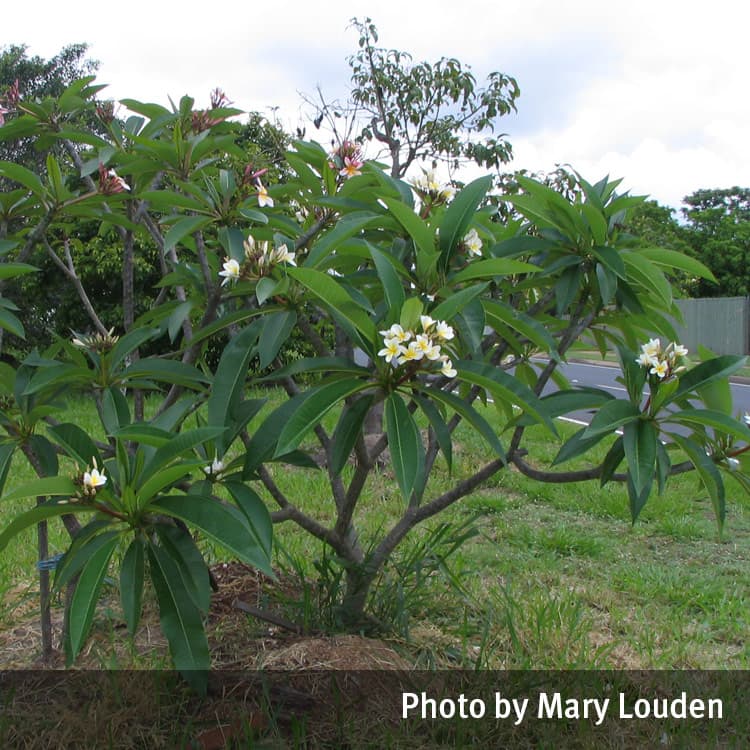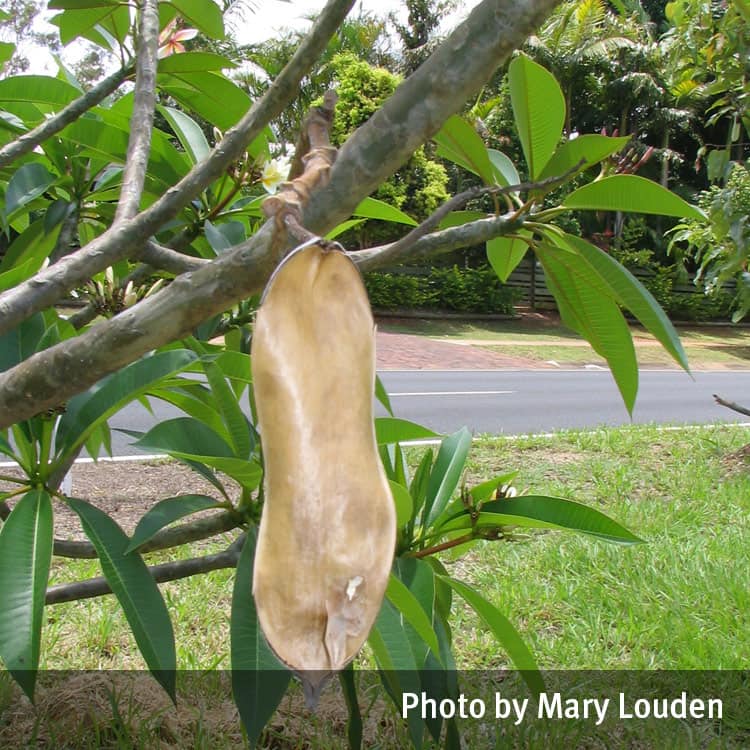Warning
Seek medical attention if symptoms occur.
Description
A deciduous, ornamental tree to 6m with highly perfumed flowers, popular as a garden specimen or as street trees.
The highly perfumed flowers have five petals, white or pink with a yellow centre, about 5cm in diameter and are grouped in clusters at the ends of the branches.
The stiff, leathery leaves are up to 30cm long and 10cm wide, ovate to oblong with a pointed apex and a prominent marginal vein; leaves clustered towards the ends of the branches.
Toxicity
Symptoms
The milky sap can be a skin irritant in sensitive individuals causing rash and blistering. Ingestion of the sap or bark can cause vomiting and diarrhoea.
Images



Details
Common name: Frangipani
Botanical name: Plumeria species, most commonly Plumeria rubra
Other common names: Temple tree, pagoda tree
Family: Apocynaceae
General description: A deciduous, ornamental tree to 6m with highly perfumed flowers, popular as a garden specimen or as street trees.
Flowers: The highly perfumed flowers have five petals, white or pink with a yellow centre, about 5cm in diameter and are grouped in clusters at the ends of the branches.
Leaves: The stiff, leathery leaves are up to 30cm long and 10cm wide, ovate to oblong with a pointed apex and a prominent marginal vein; leaves clustered towards the ends of the branches.
Fruit/Berries: The fruit is a two-parted brown pod, 15-30cm long and 1-1.5cm in diameter, splitting horizontally to release numerous seeds.
Other: Plant has copious milky sap.